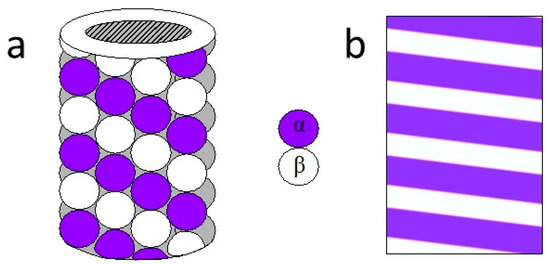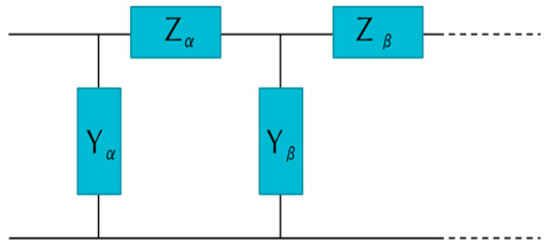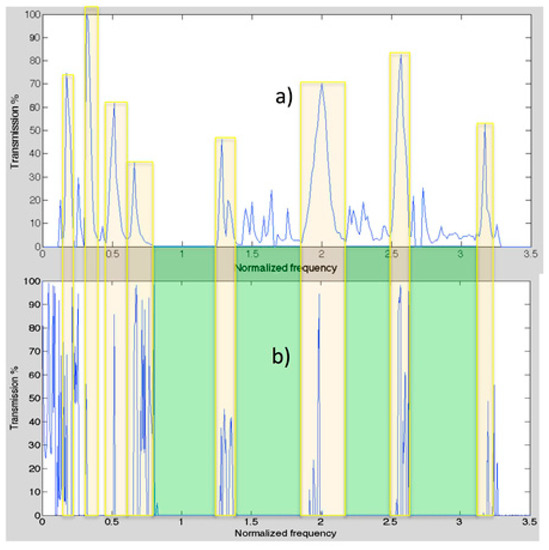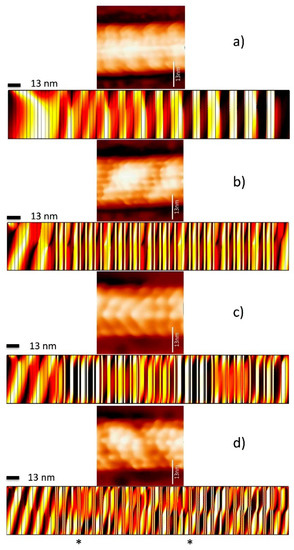Byrne, J.H.; Schultz, S.G. Introduction to Membrane Transport and Bioelectricity; Raven Press, University of Delaware: Newark, DE, USA, 1988. [Google Scholar]
Gilbert, S.F.; Sarkar, S. Embracing complexity: Organicism for the 21st century. Dev. Dyn. 2000, 219, 1–9. [Google Scholar] [CrossRef]
Lugo, J.E.; Doti, R.; Agarwal, R.; Ray, K.; Faubert, J. Physical Analogies in Biology: From Photons, Phonons, Bloch Waves to Non Linear Oscillators. Adv. Sci. Eng. Med. 2015, 7, 62–75. [Google Scholar] [CrossRef]
Kittel, C. Crystal Structure. Introduction to Solid State Physics, 8th ed.; John Wiley & Sons: Hoboken, NJ, USA, 2005; pp. 3–6. [Google Scholar]
Prather, D.W. Photonic Crystals, Theory, Applications and Fabrication; John Wiley & Sons: Hoboken, NJ, USA, 2005. [Google Scholar]
Hussein, M.I. Reduced Bloch mode expansion for periodic media band structure calculations. In Proceedings of the Royal Society of London A: Mathematical, Physical and Engineering Sciences; The Royal Society: London, UK, 2009; pp. 2825–2848. [Google Scholar]
Joannopoulos, J.D.; Johnson, S.G.; Winn, J.N.; Meade, R.D. Photonic Crystals Molding the Flow of Light; Princeton University press: Princeton, NJ, USA, 2011. [Google Scholar]
Vigneron, J.P.; Simonis, P. Natural photonic crystals. Phys. B Condens. Matter 2012, 407, 4032–4036. [Google Scholar] [CrossRef]
Onslow, H. The Iridescent Colours of Insects. Nature 1920, 106, 181–183. [Google Scholar] [CrossRef]
Zi, J.; Yu, X.; Li, Y.; Hu, X.; Wang, X.; Liu, X.; Fu, R. Coloration strategies in peacock feathers. Proc. Natl. Acad. Sci. USA 2003, 100, 12576–12578. [Google Scholar] [CrossRef][Green Version]
Bressloff, P.C.; Cowan, J.D. Thevisualcortexasacrystal. Phys. D Nonlinear Phenom. 2002, 173, 226–258. [Google Scholar] [CrossRef][Green Version]
Li, D.; Zhao, J. Exact solitary wave and periodic solitary wave solutions for the shallow water wave equation. Chin. Phys. Lett. 2009, 26, 5–8. [Google Scholar]
Mozziconacci, J.; Sandblad, L.; Wachsmuth, M.; Brunner, D.; Karsenti, E. Tubulin dimers oligomerize before their incorporation into microtubules. PLoS ONE 2008, 3, e3821. [Google Scholar] [CrossRef]
Chrétien, D.; Fuller, S.D.; Karsenti, E. Structure of growing microtubule ends:Two-dimensional sheets close in to tubes at variable rates. J. Cell Biol. 1995, 129, 1311–1328. [Google Scholar] [CrossRef]
Georgiev, D.; Papaioanou, S.; Glazebrook, J. Neuronic system inside neurons: Molecular biology and biophysics of neuronal microtubules. Biomed. Rev. 2004, 15, 67–75. [Google Scholar] [CrossRef][Green Version]
Luchko, T.; Huzil, J.T.; Stepanova, M.; Tuszynski, J. Conformational analysis of the carboxy-terminaltails of human β-tubulin isotypes. Biophys. J. 2008, 94, 1971–1982. [Google Scholar] [CrossRef][Green Version]
Feinerman, O.; Segal, M.; Moses, E. Signal propagation along unidimensional neuronal networks. J. Neurophysiol. 2005, 94, 3406–3416. [Google Scholar] [CrossRef] [PubMed]
Huang, X.; Troy, W.C.; Yang, Q.; Ma, H.; Laing, C.R.; Schiff, S.J.; Wu, J.-Y. Spiral waves in disinhibited mammalian neocortex. J. Neurosci. 2004, 24, 9897–9902. [Google Scholar] [CrossRef][Green Version]
Minoura, I.; Muto, E. Dielectric measurement to find individual microtubules using the electro orientation method. Biophys. J. 2006, 90, 3739–3748. [Google Scholar] [CrossRef] [PubMed][Green Version]
Ray, K.; Roy, M.K. A theoretical basis for surges of electroencephalogram activity and vivid mental sensation during neardeath experience. Int. J. Eng. Sci. Technol. 2010, 2, 5484. [Google Scholar]
Sahu, S.; Ghosh, S.; Ghosh, B.; Aswani, K.; Hirata, K.; Fujita, D.; Bandyopadhyay, A. Atomic water channel controlling remarkable properties of a single brain microtubule:correlating single protein to its supramolecular assembly. Biosens. Bioelectron. 2013, 47, 141–148. [Google Scholar] [CrossRef][Green Version]
Sahu, S.; Ghosh, S.; Hirata, K.; Fujita, D. A Bandyopadhyay Multi-level memory-switching properties of a single brain microtubule. Appl. Phys. Lett. 2013, 102, 123701. [Google Scholar] [CrossRef]
Satarić, M.V.; Ilić, D.I.; Ralević, N.; Tuszynski, J.A. A nonlinear model of ionic wave propagation along microtubules. Eur. Biophys. J. 2009, 38, 637–647. [Google Scholar] [CrossRef]
Ray, K.; Roy, M.K. A theoretical basis for brain waves with implications for a large scale integration required for cognitiveprocesses. In Proceedings of the 9th IEEE International Conference on Cognitive Informatics, Beijing, China, 7–9 July 2010; pp. 436–440. [Google Scholar]
Llinás, R. The intrinsic electrophysiological properties of mammalian neurons:insights into central nervous system function. Science 1988, 242, 1654–1664. [Google Scholar] [CrossRef]
Başar, E. Brain oscillations in neuro psychiatric disease. Dialogues. Clin. Neurosci. 2013, 15, 291–300. [Google Scholar]
Bódizs, R.; Kis, T.; Lázár, A.S.; Havrán, L.; Rigó, P.; Clemens, Z.; Halász, P. Prediction of general mental ability based on neural oscillation measures of sleep. J. Sleep Res. 2005, 14, 285–292. [Google Scholar] [CrossRef]
Moran, L.V.; Hong, L.E. High vs low frequency neural oscillations in schizophrenia. Schizophr. Bull. 2011, 37, sbr056. [Google Scholar] [CrossRef]
Komal, S.; Pushpendra, S.; Pathik, S.; Satyajit, S.; Subrata, G.; Kanad, R.; Daisuke, F. DaisukeFujita and Anirban Bandyopadhyay Fractal, scale free electromagnetic resonance of a single brain extracted microtubule nanowire, a single tubulin protein and a single neuron. Fractal Fract. 2020, 4, 11. [Google Scholar] [CrossRef][Green Version]
Pushpendra, S.; Subrata, G.; Pathik, S.; Kanad, R.; Fujita, D.; Bandyopadhyay, A. Reducing the Dimension of a Patch-Clamp to the Smallest Physical Limit Using a Coaxial Atom Probe. Prog. Electromagn. Res. B 2020, 89, 29–44. [Google Scholar] [CrossRef]
Ray, K.; Agarwal, R.; Cacha, L.A.; Poznanski, R.R. Protein Polarization Induced Bloch Waves in Axonal Fibres. In Proceedings of the 11th International Conference on VibrationProblems, Lisbon, Portugal, 9–12 September 2013. [Google Scholar]
Wang, K.; Rappel, W.-J.; Levine, H. Cooperativity can reduce stochasticity in intracellular calcium dynamics. Phys. Biol. 2004, 1, 27. [Google Scholar] [CrossRef] [PubMed][Green Version]
Alberts, B.; Bray, D.; Hopkin, K.; Johnson, A.D.; Lewis, J.; Raff, M. Essential Cell Biology: An Introduction to the Molecular Biology of the Cell; Garland Science Publishing: NewYork, NY, USA, 1998. [Google Scholar]
Yeh, P. Optical Waves in Layered Media; Wiley-Interscience: Hoboken, NJ, USA, 2005. [Google Scholar]
Dobrowolski, J.A.; Lowe, D. Optical thin film synthesis program based on the use of Fourier transforms. Appl. Opt. 1978, 17, 3039–3050. [Google Scholar] [CrossRef][Green Version]
Jackson, D.R. Plane Wave Propagation and Reflection. In The Electrical Engineering Handbook; Chen, W.-K., Ed.; Elsevier Academic Press: Amsterdam, The Netherlands, 2004; pp. 513–524. [Google Scholar]
Sahu, S.; Ghosh, S.; Fujita, D.; Bandyopadhyay, A. Live visualizations of single isolated tubulin protein self-assembly via tunneling current: Effect of electromagnetic pumping during spontaneous growth of microtubule. Sci. Rep. 2014, 4, 1–9. [Google Scholar] [CrossRef][Green Version]







